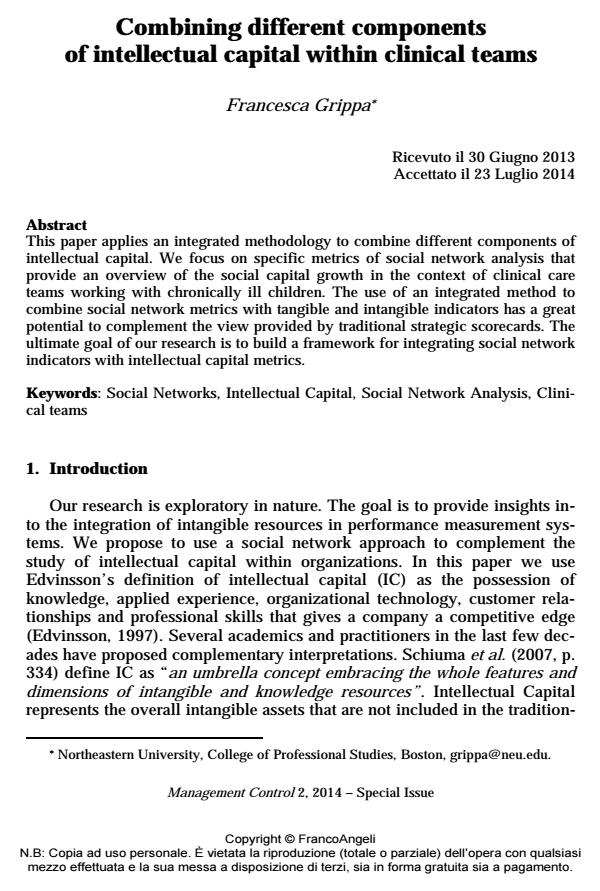Combining different components of intellectual capital within clinical teams
Titolo Rivista MANAGEMENT CONTROL
Autori/Curatori Francesca Grippa
Anno di pubblicazione 2014 Fascicolo 2014/2
Lingua Inglese Numero pagine 25 P. 95-119 Dimensione file 132 KB
DOI 10.3280/MACO2014-002005
Il DOI è il codice a barre della proprietà intellettuale: per saperne di più
clicca qui
Qui sotto puoi vedere in anteprima la prima pagina di questo articolo.
Se questo articolo ti interessa, lo puoi acquistare (e scaricare in formato pdf) seguendo le facili indicazioni per acquistare il download credit. Acquista Download Credits per scaricare questo Articolo in formato PDF

FrancoAngeli è membro della Publishers International Linking Association, Inc (PILA)associazione indipendente e non profit per facilitare (attraverso i servizi tecnologici implementati da CrossRef.org) l’accesso degli studiosi ai contenuti digitali nelle pubblicazioni professionali e scientifiche
This paper applies an integrated methodology to combine different components of intellectual capital. We focus on specific metrics of social network analysis that provide an overview of the social capital growth in the context of clinical care teams working with chronically ill children. The use of an integrated method to combine social network metrics with tangible and intangible indicators has a great potential to complement the view provided by traditional strategic scorecards. The ultimate goal of our research is to build a framework for integrating social network indicators with intellectual capital metrics.
Parole chiave:Social Networks, Intellectual Capital, Social Network Analysis, Clinical Teams
Francesca Grippa, Combining different components of intellectual capital within clinical teams in "MANAGEMENT CONTROL" 2/2014, pp 95-119, DOI: 10.3280/MACO2014-002005